Home » Posts tagged 'Pull-apart basin'
Tag Archives: Pull-apart basin
Source areas in the Agost Basin (Betic Cordillera)
A new work to illustrate a changes in source areas related with pull-apart basin in the Betics. Here the link to the work in researchgate.
Sedimentary and mineralogical analyses were performed in the Neogene Agost Basin (External Domain, Betic Cordillera) to reconstruct relationships between tectonics and sedimentation, and source areas evolution over time.
Geological Setting
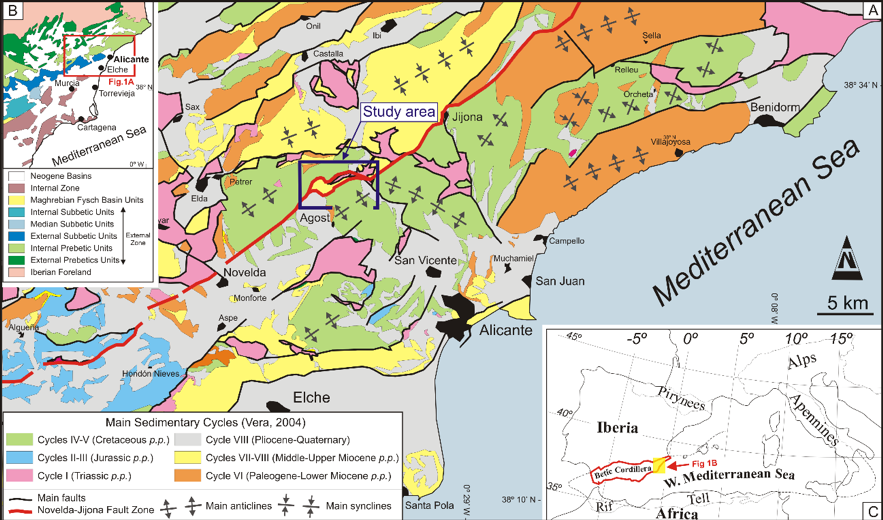
The sedimentary analysis allowed defining two sedimentary sequences: (1) Lower Stratigraphic Unit, Serravallian p.p. and (2) Upper Stratigraphic Unit, post Lower Tortonian (Upper Miocene p.p.)separated by an angular unconformity. They consist of marine (lithofacies L-1to L-3) and continental (lithofacies L-5to L-8) deposits respectively (Figure 2).
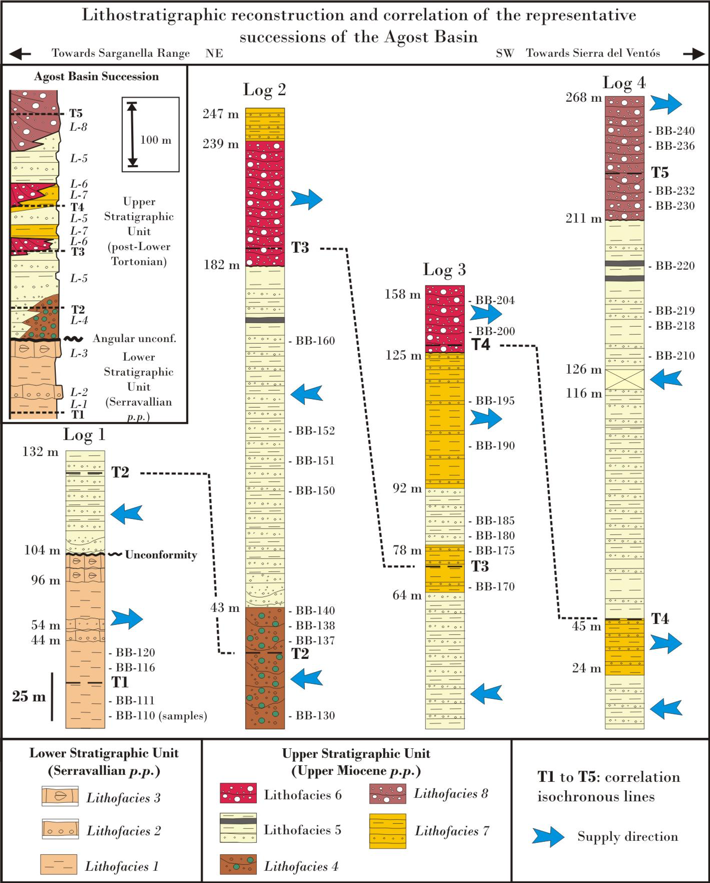
The analysis of mineralogical assemblages and some XRD parameters of the sedimentary sequences (Figure 3) and older formations (Figure 4) allowed recognizing a sedimentary evolution controlled by the activation of different source areas over time.
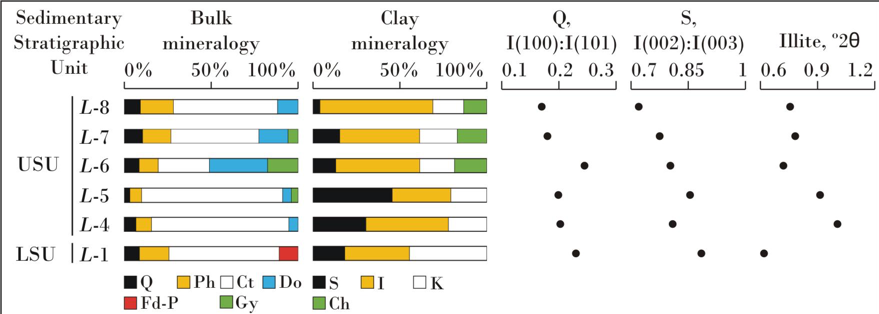

In particular, the Ill+Kln±Sme+Chl clay-mineral association characterizes the supply from Triassic formations; the Ill+Kln+Sme association from Albian formations; the Sme+Ill±Kln+(I-S) and Sme+Ill±Kln associations from Upper Cretaceous p.p.formations; and the Sme+Ill±Kln+(I-S) association from Paleogene formations, testifying a tectonic mobility of the basin margins differentiated over time (Figure 5).
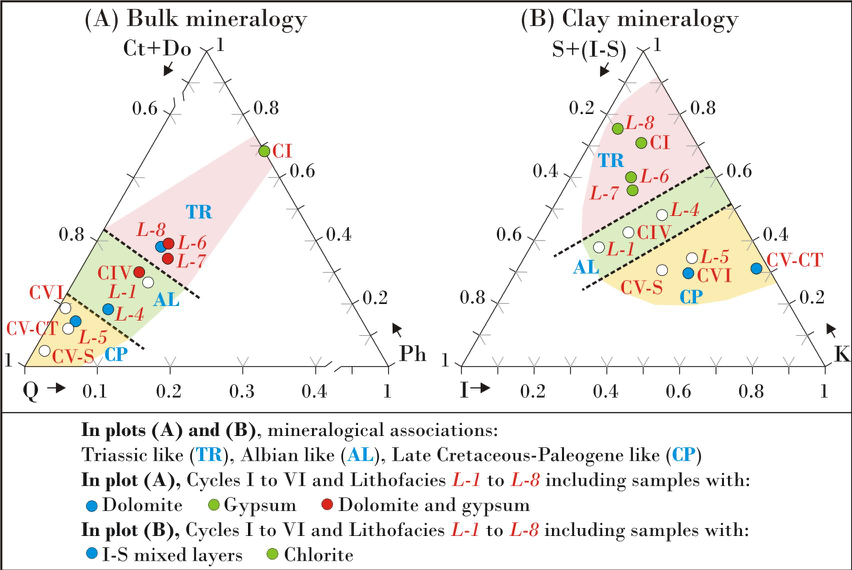
This reconstruction leads to propose detailed relationships between types of deposits and provenance and not a classic “unroofing”, as follows: (i) the lithofacies L-1 (lithofacies L-2 and L-3 were not analysed) is characterized by the Ill+Kln+Sme mineralogical association indicating an origin from the Albian formations; (ii) the lithofacies L-4 shows a mixture of Ill+Kln+Sme and Sme+Ill+Kln associations sourced from the Albian and Upper Cretaceous formations; (iii) the lithofacies L-5 is characterized by the Sme+Ill±Kln+(I-S) association indicating a provenance from the Upper Cretaceous and Paleogene formations; (iv) the lithofacies L-6 to L-8 are characterized by the Ill+Kln±Sme+Chl association indicating a supply mainly from Triassic deposits. The evolutionary sedimentary model reconstructed for the Agost Basin, which improves a previous contribution about the same area, has been correlated with those reported in other intramontane Neogene basins in the Betic-Rifian Arc studied with similar resolution, so obtaining useful information for regional reconstructions.
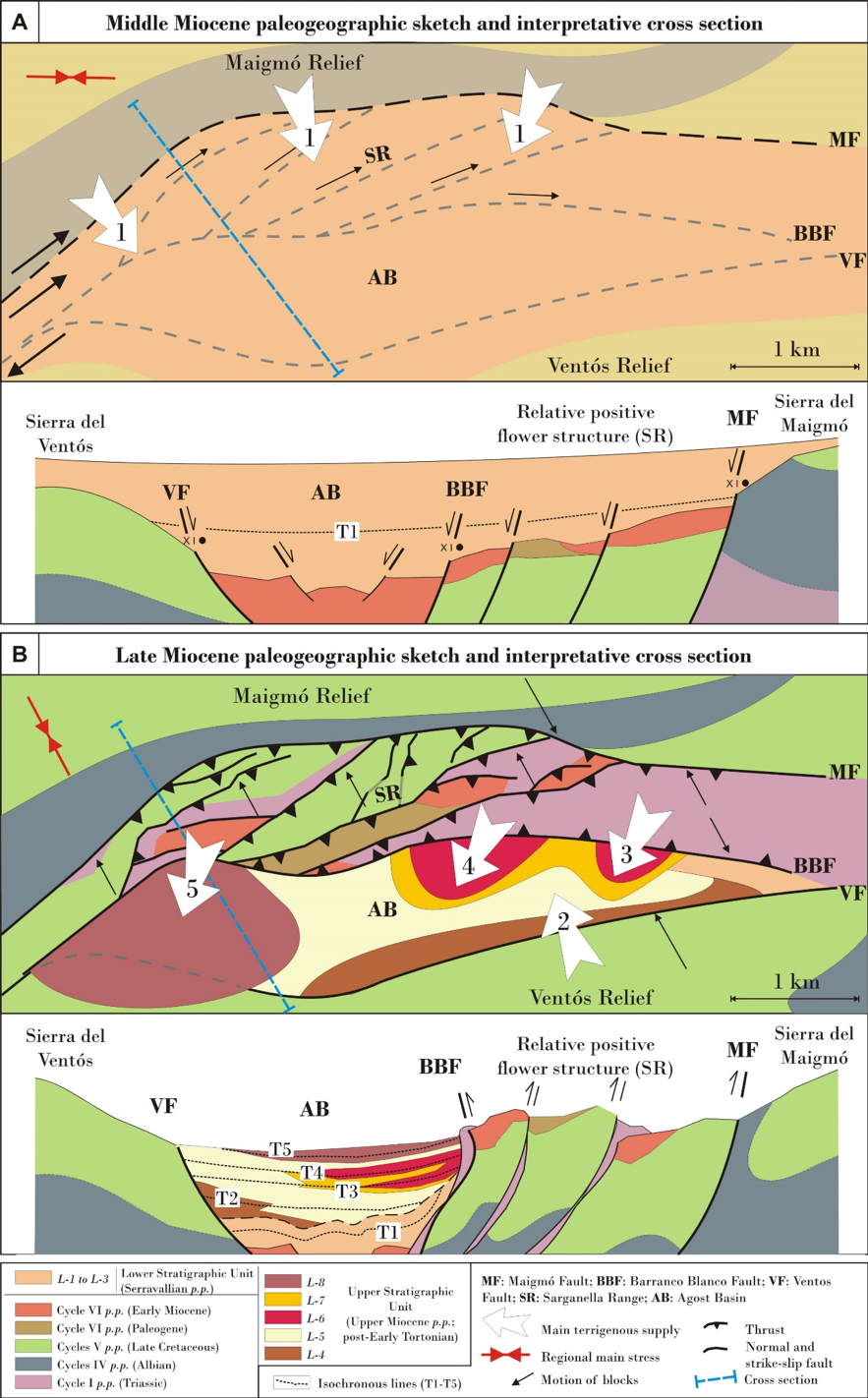
The Agost Basin (Betic Cordillera, Alicante province, Spain): a pull-apart basin involving salt tectonics
A new work to illustrate a strike-slip basin in the Betics. Here the link to the publisher.
The Agost Basin is characterized by a Miocene-Quaternary shallow marine and continental infilling controlled by the evolution of several curvilinear faults involving salt tectonics derived from Triassic rocks. From the Serravallian on, the area experienced a horizontal maximum compression with a rotation of the maximum stress axis from E-W to N-S.

Geological setting
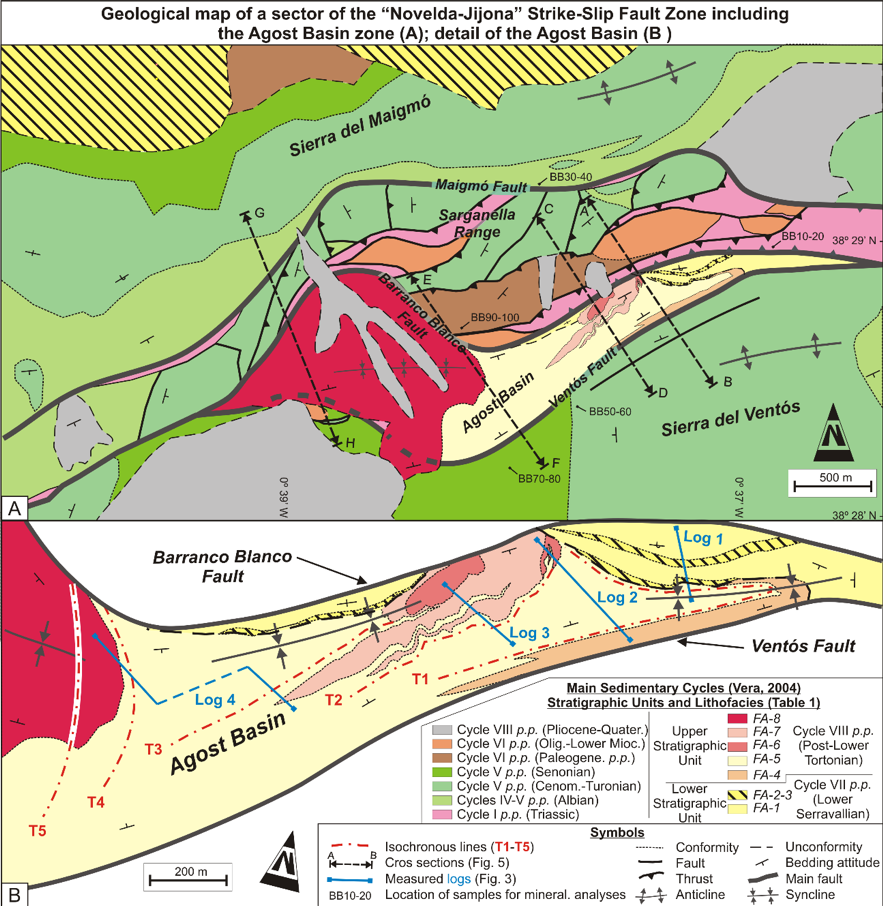
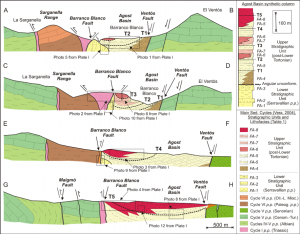
The resulting deformation gave rise to a strike-slip fault whose evolution is characterized progressively by three stages (see Figure 4): (i) stepover/releasing bend with a dextral motion of blocks; (ii) very close to pure horizontal compression; and (iii) restraining bend with a sinistral movement of blocks.
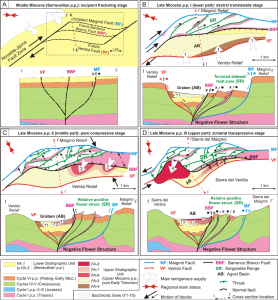
In particular, after an incipient fracturing stage, faults generated a pull-apart basin with terraced sidewall fault and graben subzones developed in the context of a dextral stepover during the lower part of late Miocene p.p. The occurrence of Triassic shales and evaporites played a fundamental role in the tectonic evolution of the study area. The salty material flowed along faults during this stage generating salt walls in root zones and salt push-up structures at the surface. During the purely compressive stage (middle part of late Miocene p.p.) the salt walls were squeezed to form extrusive mushroom-like structures. The large amount of clayish and salty material that surfaced was rapidly eroded and deposited into the basin, generating prograding fan clinoforms. The occurrence of shales and evaporites (both in the margins of the basin and in the proper infilling) favored folding of basin deposits, faulting, and the formation of rising blocks. Later, in the last stage (upper part of late Miocene p.p.), the area was affected by sinistralrestraining conditions and faults must have bent to their current shape. The progressive folding of the basin and deformation of margins changed the supply points and finally caused the end of deposition and the beginning of the current erosive systems. On the basis of the interdisciplinary results, the Agost Basin can be considered a key case of the interference between salt tectonics and the evolution of strike-slip fault zones. The reconstructed model has been compared with several scaled sandbox analogical models and with some natural pull-apart basins.
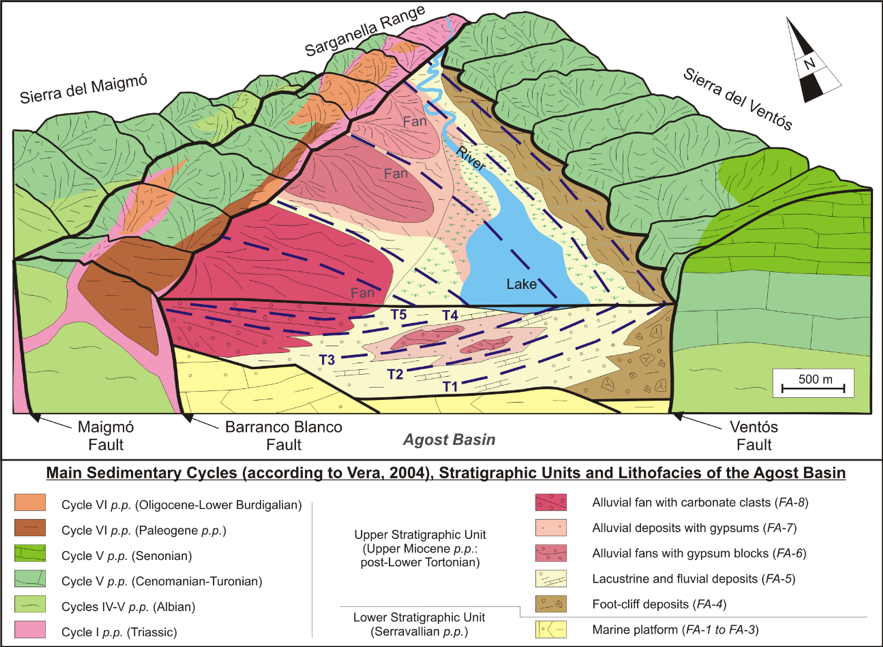
Research supported by: Research Project CGL2016-75679-P, Spanish Ministry of Education and Science; Research Groups and Projects of the Generalitat Valenciana, Alicante University (CTMA-IGA); Research Group RNM 146, Junta de Andalucía; Grants from University of Urbino “Carlo Bo”, responsible M. Tramontana.
Recent Comments